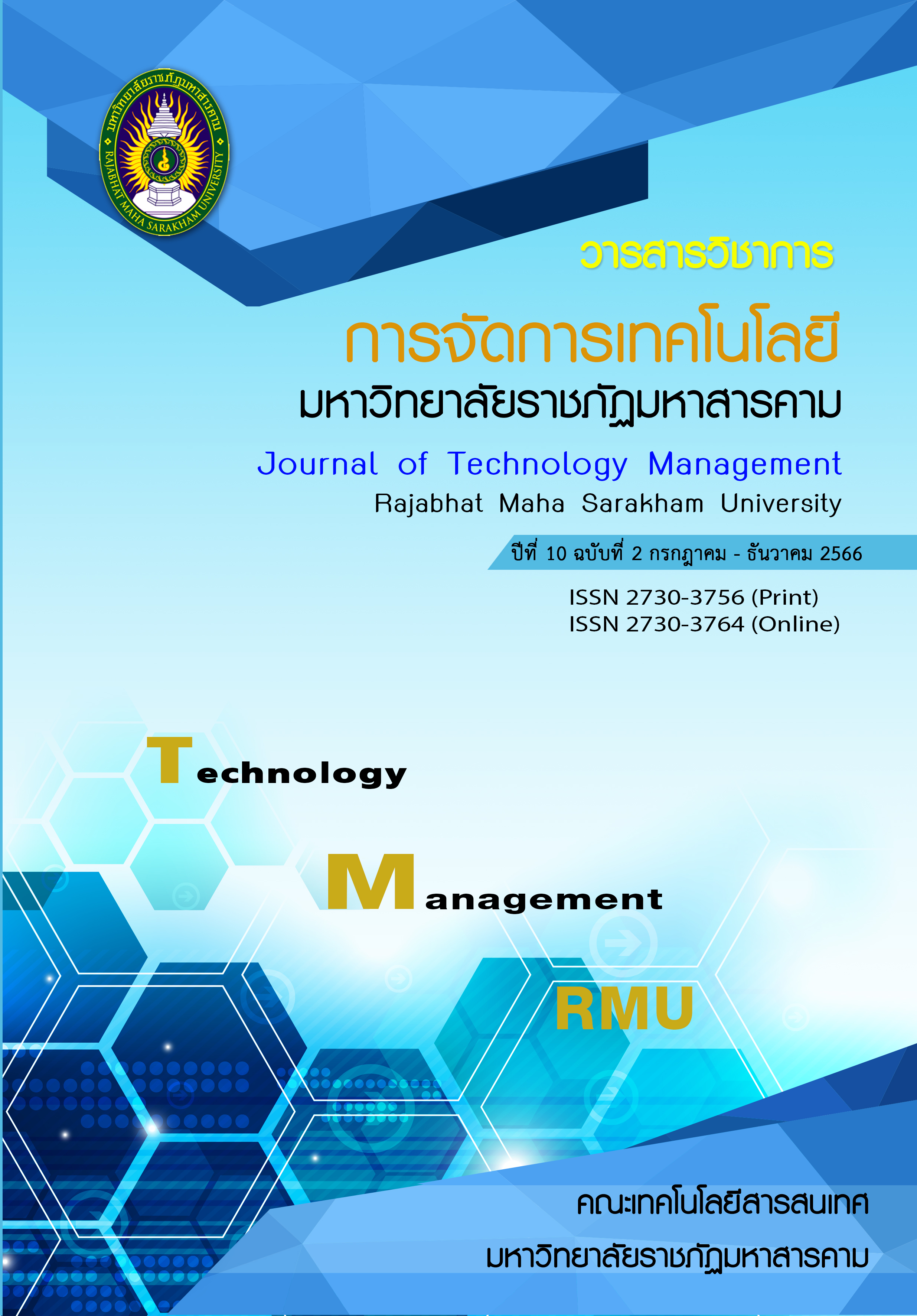Using K-means Techniques for Clustering Depressed Patients in Mahasarakham Province
Main Article Content
บทคัดย่อ
This study used advanced data mining techniques to examine the patterns of depression and service use among patients in Mahasarakham Province. The focus was to understand how people with depression access and use medical services in this area. Data collected from the Mahasarakham Provincial Public Health Office were meticulously analyzed using the K-means clustering method. This analysis involved a dataset consisting of five key variables used in the clustering process. This study successfully identified six unique clusters of patients, each showing different symptoms and degrees of depression. These findings provide essential insights into the diverse manifestations of depression within Mahasarakham’s patient population, contributing valuable information for healthcare providers and policymakers to optimize service delivery and treatment approaches.
Article Details

อนุญาตภายใต้เงื่อนไข Creative Commons Attribution-NonCommercial-NoDerivatives 4.0 International License.
เอกสารอ้างอิง
Phomprasith, S., Karawekpanyawong, N., Pinyopornpanish, K., Jiraporncharoen, W., Maneeton, … Lawanaskol, S. (2022). Prevalence and Associated Factors of Depression in Medical Students in a Northern Thailand University: A Cross-Sectional Study. Healthcare, 10(3), 1-13.https://doi.org/10.3390/HEALTHCARE10030488
World Health Organization. (2023). Depressive disorder (depression). Retrieved October 25, 2023, from https://www.who.int/news-room/fact-sheets/detail/depression
Gupta, M. K., & Chandra, P. (2020). A comprehensive survey of data mining. International Journal of Information Technology (Singapore), 12(4), 1243–1257. https://doi.org/10.1007/S41870-020-00427-7/TABLES/7
Kolukuluri, M., Keerthana Devi, V., Tejaswini, S. S., & Anusha, K. (2023). Business Intelligence Using Data Mining Techniques And Predictive Analytics. Journal of Pharmaceutical Negative Results, 13, 6923–6932. https://doi.org/10.47750/PNR.2022.13.S07.837
Dogan, A., & Birant, D. (2021). Machine learning and data mining in manufacturing. Expert Systems With Applications, 166, 114060. https://doi.org/10.1016/J.ESWA.2020.114060
Laijawala, V., Aachaliya, A., Jatta, H., & Pinjarkar, V. (2020). Mental Health Prediction using Data Mining: A Systematic Review. SSRN Electronic Journal. https://doi.org/10.2139/SSRN.3561661
de la Fuente-Tomas, L., Arranz, B., Safont, G., Sierra, P., Sanchez-Autet, M., Garcia-Blanco, A., & Garcia-Portilla, M. P. (2019). Classification of patients with bipolar disorder using k-means clustering. PLOS ONE, 14(1), e0210314. https://doi.org/10.1371/JOURNAL.PONE.0210314
Weißer, T., Saßmannshausen, T., Ohrndorf, D., Burggräf, P., & Wagner, J. (2020). A clustering approach for topic filtering within systematic literature reviews. MethodsX, 7, 100831. https://doi.org/10.1016/J.MEX.2020.100831
Towards Data Science. (2018). K-means Clustering: Algorithm, Applications, Evaluation Methods, and Drawbacks. Retrieved October 25, 2023, from https://towardsdatascience.com/k-means-clustering-algorithm-applications-evaluation-methods-and-drawbacks-aa03e644b48a
Ghazal, T. M., Hussain, M. Z., Said, R. A., Nadeem, A., Hasan, M. K., Ahmad, M., Khan, M. A., & Naseem, M. T. (2021). Performances of K-Means Clustering Algorithm with Different Distance Metrics. Intelligent Automation & Soft Computing, 30(2), 735–742. https://doi.org/10.32604/IASC.2021.019067
Ashabi, A., Bin Bin Sahibuddin, S., & Salkhordeh Salkhordeh Haghighi, M. (2020). The systematic review of K-means clustering algorithm. ACM International Conference Proceeding Series, 13–18. https://doi.org/10.1145/3447654.3447657
Baghdadi, N. A., Alsayed, S. K., Malki, G. A., Balaha, H. M., & Farghaly Abdelaliem, S. M. (2023). An Analysis of Burnout among Female Nurse Educators in Saudi Arabia Using K-Means Clustering. European Journal of Investigation in Health, Psychology & Education (EJIHPE), 13(1), 33–53. https://search.ebscohost.com/login.aspx?direct=true&db=asn&AN=161434209&site=ehost-live
Sheha, M. A., Mabrouk, M. S., & Sharawy, A. A. (2022). Feature Engineering: Toward Identification of Symptom Clusters of Mental Disorders. IEEE Access, 10, 134136–134156. https://doi.org/10.1109/ACCESS.2022.3232075
Zeng, Y., & Cheng, F. (2021). Medical and Health Data Classification Method Based on Machine Learning. Journal of Healthcare Engineering. https://doi.org/10.1155/2021/2722854
Martinez-Plumed, F., Contreras-Ochando, L., Ferri, C., Hernandez-Orallo, J., Kull, M., Lachiche, N., Ramirez-Quintana, M. J., & Flach, P. (2021). CRISP-DM Twenty Years Later: From Data Mining Processes to Data Science Trajectories. IEEE Transactions on Knowledge and Data Engineering, 33(8), 3048–3061. https://doi.org/10.1109/TKDE.2019.2962680
Depression patients have access to services in Mahasarakham province. (n.d.). Department of Mental Health.
Levis, B., Sun, Y., He, C., Wu, Y., Krishnan, A., Bhandari, & Thombs, B. D. (2020). Accuracy of the PHQ-2 Alone and in Combination With the PHQ-9 for Screening to Detect Major Depression: Systematic Review and Meta- analysis. JAMA, 323(22), 2290–2300. https://doi.org/10.1001/JAMA.2020.6504
Shi, C., Wei, B., Wei, S., Wang, W., Liu, H., & Liu, J. (2021). A quantitative discriminant method of elbow point for the optimal number of clusters in clustering algorithm. Eurasip Journal on Wireless Communications and Networking, 2021(1), 1–16. https://doi.org/10.1186/S13638-021-01910-W/FIGURES/6


